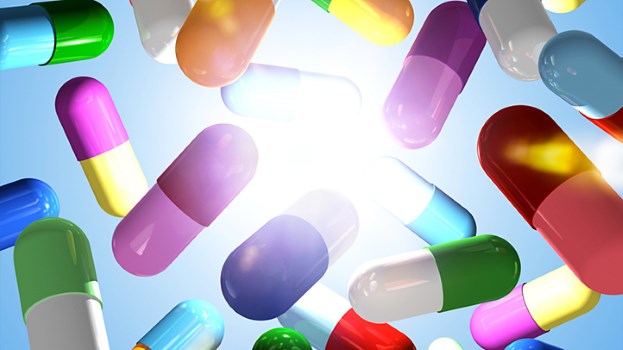
Ultraviolet (UV) photons, generated through natural sunlight can mix with
medications making most of us sun sensitive. The reaction can be similar to
sunburn. Sometimes worse!
Photosensitivity (or sun sensitivity) is inflammation of the skin induced by the
combination of sunlight and certain medications or substances. Both the
photosensitizing medication or chemical and light sources have to be present in
order for a photosensitivity reaction to occur.
Generally these reactions can be divided into two mechanisms, 1) phototoxic
reaction, and 2) photoallergic reaction. Phototoxic drugs are much more common
than photoallergic drugs.
So then, what is the difference between a phototoxic reaction and phototoxic
In phototoxic reactions, the drug may become activated by exposure to sunlight
and cause damage to the skin. The skin’s appearance resembles sunburn, and the
process is generally acute and has a fast onset. Ultraviolet A (UVA) radiation is
most commonly associated with phototoxicity, but ultraviolet B (UVB) and visible
light may also contribute to this reaction.
Rash from a phototoxic reaction is mainly confined to the sun-exposed area of the
skin. A phototoxic reaction typically clears up once the drug is discontinued and
has been cleared from the body, even after re-exposure to light.
In photoallergic reactions, the ultraviolet exposure changes the structure of the
drug so that is seen by the body’s immune system as an invader (antigen). The
immune system initiates an allergic response and cause inflammation of the skin in
the sun-exposed areas. These usually resemble eczema and are generally chronic
(long-lasting). Many drugs in this family are topical drugs.
This type of photosensitivity may recur after sun exposure even after the drug has
cleared from the system and can sometimes spread to areas of the skin unexposed
Ultraviolet (UV) light kills cells by damaging their DNA. The light initiates a
reaction between two molecules known as thymine, which is the bases that makes
up DNA.
If cellular processes are disrupted because of an incorrect repair or
remaining damage, the cell cannot carry out its normal functions. At this point,
there are two possibilities, depending on the extent and location of damage. If the
damage is not too extensive, cancerous or precancerous cells are created from
healthy cells. If it is widespread, the cell will die.
Tanning lamps also produce UVA and/or UVB rays. These artificial rays affect the
skin in the same way as do UVA and UVB from the sun.
Read the insert that comes with medication prescriptions and most over the counter
medications as well. Consult with your doctor or medical specialist.
GRAPEFRUIT JUICE ALSO INTERACTS WITH MEDICATIONS
Personally, I am not a fan of Grapefruit juice but if you are you may have heard
that medications don’t like grapefruit juice either.
Grapefruit juice increases the absorption of the drug in the bloodstream. When
there is a higher concentration of a drug, you tend to have more adverse events.
If you drink a lot of grapefruit juice while taking certain statin drugs to lower
cholesterol, too much of the drug may stay in your body, increasing your risk of
liver damage and muscle breakdown that can lead to kidney failure.
S
hiew Mei Huang, acting director of the Food and Drug Administration’s office of
Clinical Pharmacology says, “drinking grapefruit juice several hours before or
several hours after taking your medication may still be dangerous. So it’s best to
avoid or limit consuming grapefruit juice or fresh grapefruit when taking certain drugs.
Examples of some types of drugs that grapefruit juice can interact with are:
- Some statin drugs to lower cholesterol, such as Zocor (simvastatin), Lipitor
- (atorvastatin) and Pravochol (pravastatin).
- Some types of blood pressure-lowering drugs, such as Nifediac and Afeditab (both
- Organ transplant rejection drugs, such as Sandimmune and Neoral (both
- Anti-anxiety drugs, such as BuSpar (buspirone)
- Anti-arrhythmia drugs, such as Cordarone and Nexterone (both amiodarone)
- Antihistamines, such as Allegra (fexofenadine)
Grapefruit juice does not affect all the drugs in the categories above. Ask your
pharmacist or other health care professional to find out if your specific drug is sensitive to grape juice.
As a further note, many drugs are broken down (metabolized) with the help of a
vital enzyme called CYP3A4 in the small intestine. Certain substances in
grapefruit juice block the action of this enzyme, so instead of being metabolized,
more of the drug enters the bloodstream and stays in the body longer. The result:
potentially dangerous levels of the drug in your body.
The amount of CYP3A4 enzyme in the intestine varies from one person to another,
says Huang. Some people have a lot, and others have just a little – so grapefruit
juice may affect people differently when they take the same drug.
Questions? Add a comment or find me on Facebook here.
REFERENCES
Medicinenet.com: Sun-Sensitive Drugs (photosensitivity to Drugs) FACTS.
FDA Consumer Health Information, January, 2014: www.fda.gov/ForConsumers/ConsumerUpdates
Scientific American: How does Ultraviolet Light Kill Cells?

